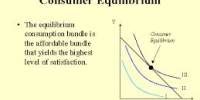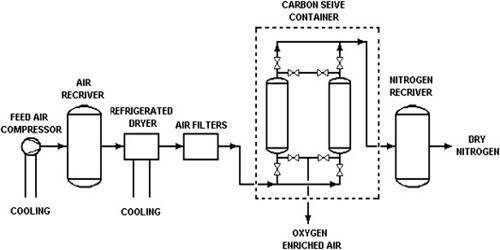Introduction
Generally most firms start as purely domestic companies. However, after operating as
domestic companies for some period, firms may decide to go international. The findings
from the monopolistic advantage theory (Hymer, 1960) and the internationalization
theory (Buckley and Casson, 1976) explain why firms get motivated to go abroad. The
monopolistic advantage theory suggests that a firm can generate higher rents from the
utilization of firm specific assets which cannot be replicated by other firms. These assets
generally include superior knowledge and economies of scale. The internationalization
theory suggests that when external markets for supplies, production, or distribution fails
to provide efficiency; firms can opt for FDI to create their own supply, production, or
distribution streams. The four most common modes of foreign market entry are exporting,
licensing, joint venture, and sole venture (Agarwal and Ramaswami, 1992). Typically
firms start exporting to a country via an agent, later establish a sales subsidiary and
eventually begin production in the host country (Johanson and Vahlne, 1977). The
internationalization theory suggests that when external markets for supplies, production,
or distribution fails to provide efficiency; firms can opt for FDI to create their own supply,
production, or distribution streams. In addition, the prospective benefit from establishing
R&D facilities abroad also plays a role in firms becoming international. The scope of
foreign subsidiaries is increasingly becoming more international and often they are at the
forefront of technological innovation (Nobel and Birkinshaw, 1998).
The focus of internationalization is shifting towards the emerging economies as
developed markets are becoming saturated and MNCs have turned to emerging markets
for future growth (London and Hart, 2004). This comes as no surprise as it is widely
believed that this century will ultimately belong to the emerging economies and countries
such as Brazil, Russia, India, and China are now seen as the next economic superpowers.
The emerging economies have become lucrative destinations for MNCs because of the
recent reforms and economic developments taking place in those countries (Cui and Lui,
2005). Specific research into emerging markets is necessary because most of the works in
international business research were conducted keeping the developed markets in mind.
The unique characteristics of emerging economies may prove many of the findings in
developed economy settings invalid in an emerging economy setting. However, there
were reasons why studies on emerging market were not common in the past. The
inappropriateness of theories developed based on developed economies, sampling and
data collection problems and lack of homogeneity in emerging economies generally
makes it difficult for researchers to conduct study on emerging economies (Hoskisson et
al, 2000).
Considering more and more companies are getting interested to invest in emerging
economies (The total capital flows to developing economies have increased from $104
billion in 1980 to $472 billion in 2005, source: Federal reserve Bank of Dallas) due to
their expected rise into dominance in the middle of the 21st century, it is very important to
understand the reasons behind the different mode of entries taken by MNCs while
entering these economies and what effect those mode of entries have on the subsequent
performance of the MNC subsidiaries in those countries. The choice of mode of entry
may have long term implications for the MNCs. It is difficult to change firms’ initial
choice of a particular mode without considerable loss of time and money (Root, 1987).
Although the work on the choice of Mode of Entry is quite abundant in the existing
literature on international business, surprisingly there is a real lack of work that relates
the mode of entry to the subsequent performance of the subsidiaries. This lacking is more
acute if we consider entry into emerging economies specifically. I believe it would be
very useful to take the studies in international business literature from a pre-entry to a
post-entry level. The findings from such study may prove very useful as it will indicate
whether what we assume to be the correct choice of mode of entry does in fact result in
positive outcome for the subsidiaries.
The number of studies focusing specifically on emerging economies has always been few.
However, we do see a change in the pattern and the number of studies focusing on
emerging economies is certainly on the rise. Through this paper I would like to add to the
existing studies conducted in the emerging economies context. In this study, I aim to look
at the interaction between the choice of entry modes and subsequent performance of
subsidiaries in emerging economies. More specifically I will look at the impact of the
choice between joint venture modes of entry versus wholly owned subsidiary modes of
entry on subsequent subsidiary performance. I chose these two modes for consideration
as the level of resource commitment by the firms are much higher in these two modes
compared to the other two modes of entry (exporting and licensing). As a result these
modes require lot more careful attention as it is not as easy to get out of a situation of a
joint venture or wholly owned subsidiary as it is with licensing or exporting. So the
significance of the findings is likely to be lot more if the comparison is between these two
modes.
One of the most common theories used in the existing entry mode literature is the
transaction cost approach. It comes as no surprise as the earliest and most complete
acceptance of transaction cost theory was amongst the international business and
economics scholars (Barney and Hesterly, 1996). However, the use of economic models
may not always be appropriate as it leaves out many other explanations. One such
problem is that they ignore organizations and institutions almost completely, and even
when considered, they treat them as a residual category required by some form of market
failure or contracting problem (Pfeffer, 1997). As mentioned by Barney and Hesterly
(1996), in the view of organizational economists the organizations exist in “seething
caldrons” of competition where firms, individuals, institutions and governments are all
seeking to obtain some part of the success that a particular firm may enjoy. It is improper
to think of organizations as merely substitutes for structuring efficient transaction when
markets fail; they possess unique advantages for governing certain kinds of economic
activities through a logic that is very different from that of a market (Ghoshal and Moran,
1996). In light of these arguments, it may not be a bad idea to look at the entry mode
impact on performance from other perspectives. So, in this paper I aim to use other
organizational theories such as the institutional theory and the resource based view of the
firm in building my arguments.
Literature Review
As mentioned before, although some studies (Delios and Beamish, 1999) have looked at
other theories such as institutional theories, most of the existing work on international
entry modes has largely been dominated by a transaction cost approach (Anderson and
Gatignon, 1986; Hennart, 1991; Makino and Neupert, 2000). The transaction cost theory
asserts that markets and hierarchies are alternative instruments for completing a set of
transactions. (Williamson, 1975). In this approach, the emphasis is on opportunism, or
self-interest pursued with guile and deceit. (Ghoshal and Moran, 1996)
The existing studies on subsidiary performance ranged from entry into developed markets
to entry into transitional economies such as Russia and the East European nations.
However, hardly any study looked specifically at entry into emerging economies, and
even when looked at was looked at an individual country level. Often the studies were
only concerned with one particular mode of entry and did not compare between entry
modes. One such study was conducted by Isobe et al (2000). In this study of Japanese
International Joint Ventures in China, they found a positive relationship between early
entry and market performance. They further found that there was a negative relationship
between the degree of a foreign firm’s control over a joint venture and early entry.
Japanese firms featured in other studies as well. Woodcock et al (1994) in their study of
Japanese firms entering the North American market found that new ventures outperform
joint ventures and joint ventures outperform acquisitions.
A number of studies were conducted on European Union nations as well. In his study of
foreign market entry mode and firm performance for European Union firms, Brouthers
(2002) found that firms whose mode of choice could be predicted by the extended
transaction cost model performed significantly better compared to those whose mode of
choice could not be predicted. This study was based on survey data collected through
questionnaires and the investments were made in all kinds of economies. Boruthers et al
(2000) conducted a study on the 500 largest firms based in European community nations
and found that firms which make perceived environment uncertainty (PEU) risk-adjusted
entry mode choices are significantly more satisfied with their firm’s performance than
firms whose entry mode choices cannot be predicted using these measures. The data was
also collected using questionnaire based survey.
In addition to looking at the performance of subsidiaries directly, some of the works
considered the survival of subsidiaries as an indication of high performance and exit as an
indication of low performance. In his study of foreign firms in the U.S. computer and
pharmaceutical industries over the 1974-1989 period Li (1995) found a higher exit rate
for foreign acquisitions and joint ventures than for subsidiaries established through
greenfield investments. In his study on the offshore drilling industry, Mascarenhas (1992)
found that first entrants and later entrants out survive early followers.
Other works on subsidiary performance were quite different from exactly looking at entry
modes as one of the determinants of success and failure. These studies looked at different
aspects such as human resource management practice, headquarter-subsidiary relations,
the concentration level of firms in a certain industry, and market experience. In a study of
101 foreign-owned subsidiaries in Russia, Fey and Bjorkman (2001) found that different
human resource management practices for managerial and non-managerial employees are
significantly related to firm performance. Hewett et al (2003) found that the more closely
headquarters and subsidiary roles in marketing activities are aligned with relational,
industry, and market conditions; the greater market share tends to be. Miller and Eden
(2006) examining the performance of U.S. subsidiaries of foreign commercial banks for
the years 1995–1998 found that local density was negatively related to foreign subsidiary
performance, and market experience was less beneficial in high-density environments.
As the findings from these studies suggest, the performance aspect of the firm were
looked at from variety of ways. However, the relationship between entry mode and firm
performance was not given much importance in most of the studies. When the specific
study setting moved out of the developed nations, it only went as far as the transitional
economies in most cases. Overall there is a need to conduct a study on the effect of entry
modes in an emerging economy setting to fill in the gaps in the existing international
business literature.
Propositions
While formulating propositions, I focused on the institutional theory and resource based
view of the firm. Since the transaction cost theory has been used very extensively in the
earlier works, including the few works that were performed on entry mode and subsidiary
performance, I decided to use a different perspective. Although some of the previous
works (e.g. Lu, 2002) looked at institutional influences; these works were specifically
geared towards finding out the determinants of entry modes rather than the effect of entry
modes. Also the resource based view was hardly used in any of the previous literature
that looked at the relationship between MNC entry mode and subsidiary performance.
Thus, I believe that the use of the institutional theory approach and the resource based
view of the firms will add something new to the existing works in the international
business literature.
The Institutional Theory
Although this theory is in prominence since the late 70s, surprisingly international
business scholars were often indifferent to the possible use of this theory in explaining
different aspects of the international business phenomenon. It is only recently that we see
a growing interest from the scholars to incorporate this theory in international business
research. As the institutional theory (Meyers 1977, DiMaggio and Powell, 1983) suggests,
there is always a pressure on the incumbent firms to bow down to institutional
isomorphism in the host country where they are operating. This is not unusual since
organizations that incorporate the practices and procedures institutionalized in the society
increase their legitimacy and their survival prospects (Meyer and Rowan, 1977). The
supporters of this argument point to the fact that drawing the attention from the audience
is of utmost importance for any firm (Zuckerman, 1999) before it can think of utilizing a
differentiation strategy to distinguish itself from the rest of the competitors. If a firm
remains as an entity that is out of radar of the desired audience, it will not be able to
derive much value through differentiation as the unique attributes that might be on
display through differentiation would remain largely unnoticed.
One note of caution here is that solely following an approach of conformity may prove
too risky as this may result in too much deviation from the culture and norms of the
parent organization. Hence, there is a need to maintain a balance between conforming to
the environment where it operates as well as remaining consistent with the Headquarter
(Rosenzweig and Singh, 1991). Maintaining this balance requires good knowledge of
both home country and host country environment. For a new entrant, understanding the
nature of the host country business environment is likely to prove difficult. In such a
scenario, joint ventures may be more helpful compared to a wholly owned subsidiary
option. Working with a local partner is likely to help the entrant in making the necessary
adjustments and ultimately operate with a balanced approach. In an emerging economy
setting, this need may be even more as the MNCs, which are mostly originated in
developed countries, generally will lack the necessary experience about the host country
environment. The MNC might overcome this problem if it has extensive experience of
operating in the host country via other projects and endeavors. However, the situation for
those MNCs who have little or no experience of operating in that particular host country
will not be as favorable when compared to the experienced MNC. This leads to my first
proposition –
Proposition 1: In an emerging economy setting, an MNC with less experience in the host
country will perform better if it engages in a joint venture instead of opting for a wholly
owned subsidiary.
It is quite common for the new incumbents to follow in the footsteps of organizations that
they perceive as successful in a particular industry. Following successful organizations
can sometimes result in success for the follower firms. In an environment of uncertainty,
this path may seem very lucrative. This may be even more useful in an emerging
economy as the MNCs often lack the necessary knowledge of operating in such
economies and the environment in general is more uncertain compared to those of the
developed nations. As mentioned by DiMaggio and Powell (1983), organizations are
rewarded for being similar to other organizations in their fields. The similarity can make
it easier for organizations to transact with other organizations, to attract career minded
staff, to be acknowledged as legitimate and reputable, and to fit into administrative
categories that define eligibility for public and private grants and contracts. These
rewards, and the subsequent high level of performance, are more likely to come if the
incumbent subsidiary follows in the footsteps of the other foreign subsidiaries that have
tested success in their approach. Although the risk of not being able to adjust to the host
country environment properly remains in such a scenario, the idiosyncratic nature of the
particular host country environment may help reduce this risk. In addition, following a
tested path would provide the firm with some prior knowledge of the potential
bottlenecks as well as areas of opportunity which might prove very useful for the new
entrant. Thus I propose –
Proposition 2: In an emerging economy setting , an MNC will perform better under a
joint venture mode if the earlier successful entrants in the industry followed this mode
and will perform better under a wholly owned subsidiary approach if the earlier
successful entrants in the industry entered via a wholly owned subsidiary approach.
The Resource Based View
The resource-based view of the firm adopts the resources and capabilities controlled by a
firm as its primary units of analysis (Barney, 1991). This view suggests that it is the
valuable, rare, and inimitable resources that a firm controls that gives it the competitive
advantage to outperform other players in the market. These resources may include
technology, marketing expertise, management expertise etc. While entering a market,
firms may not always have the necessary resources. A firm that lacks the necessary
resources may overcome this problem by relying on its partner for complementary assets.
However, there is no reason to believe that majority of the firms entering a host country
will be lacking the necessary resources. In fact, sometimes it is the abundance of the
necessary resources that prompts organizations to engage in an international venture.
However, all these might change if the firm entering the foreign market is trying out a
new industry, an industry where they have little or no previous experience. There is lot
more uncertainty on the capability of the firm to actually perform at the desired level, and
some additional support from already experienced partners are more than welcome. If
there is a partner firm available with more experience, required technological know-how
and the necessary marketing skills; the likelihood is stronger that the entrant would
choose to collaborate with that firm. In an emerging economy, the confidence level of the
entrant firm in such case would be even lower as the lack of experience is combined with
lack of understanding of the economy as a whole. So I propose the following –
Proposition 3: In an emerging economy setting, an MNC will perform better under a
joint venture compared to opting for a wholly owned subsidiary mode of entry when the
MNC has no previous experience in the industry it is entering.
Although there has been substantial research on the topic of entry modes before,
emerging market as a context was not generally considered. As we are moving more and
more into a new era of global economic order, the importance of emerging market
economies is on the rise. The future os many global companies now lie in their
performance in these not yet fully developed but rapidly growing economies. Under this
scenario, researches geared toward understanding idiosyncratic nature of these economies
is definitely going to allow scholars to get a better grasp of the overall understanding of
the business environment of these economies. In my study, I came out with three
propositions grounded on theory. I earnestly hope that my small effort will be helpful in
providing some headway for future researchers who are interested to work on the
relationship between entry mode and firm performance in the emerging economies.
















